Program implementation is the process of putting a planned initiative into action to achieve desired results. Successful program implementation requires careful planning, coordination of resources and clear communication across teams. Without a structured approach, even well-designed programs can face delays, cost overruns or misalignment with organizational goals.
Creating a program implementation plan helps teams stay organized and ensures each step is executed as intended. By following a clear guide, organizations can streamline workflows, assign responsibilities effectively and monitor progress against objectives. Using program implementation tools and templates makes it easier to track tasks, measure success, and adapt as challenges arise, keeping projects on course from start to finish.
What Is Program Implementation?
Program implementation is the process of taking a program from planning to execution to achieve specific goals. It involves coordinating tasks, assigning resources, monitoring progress and ensuring that all components work together as intended. A successful program implementation turns strategy into actionable steps that produce measurable results and align with organizational objectives.
It also requires oversight to manage risks, track milestones and adapt to changing conditions. Program implementation is more than completing tasks on time; it ensures that each element of a program contributes to the overall purpose and delivers the intended value to stakeholders. Without structured execution, even well-designed programs may fail to meet expectations.
Project management software streamlines program implementation by providing tools to plan, assign and track work in real time. Teams can monitor progress, manage dependencies, allocate resources efficiently and communicate updates instantly. By centralizing information, project management software reduces the risk of miscommunication and allows managers to respond to issues quickly, keeping programs on schedule and within budget.
ProjectManager combines multiple project views, resource management, task tracking and dashboards in one platform, making it ideal for program implementation. Teams can use Gantt charts and roadmaps to link dependencies, filter for the critical path and set a baseline to track variance in real time. Kanban boards and task lists organize complex workflows, balance workloads across resources and monitor progress at a glance. Its real-time updates, reporting features and AI project insights help managers identify risks, optimize schedules and make informed decisions, ensuring successful program implementation from start to finish. Get started with ProjectManager today for free.
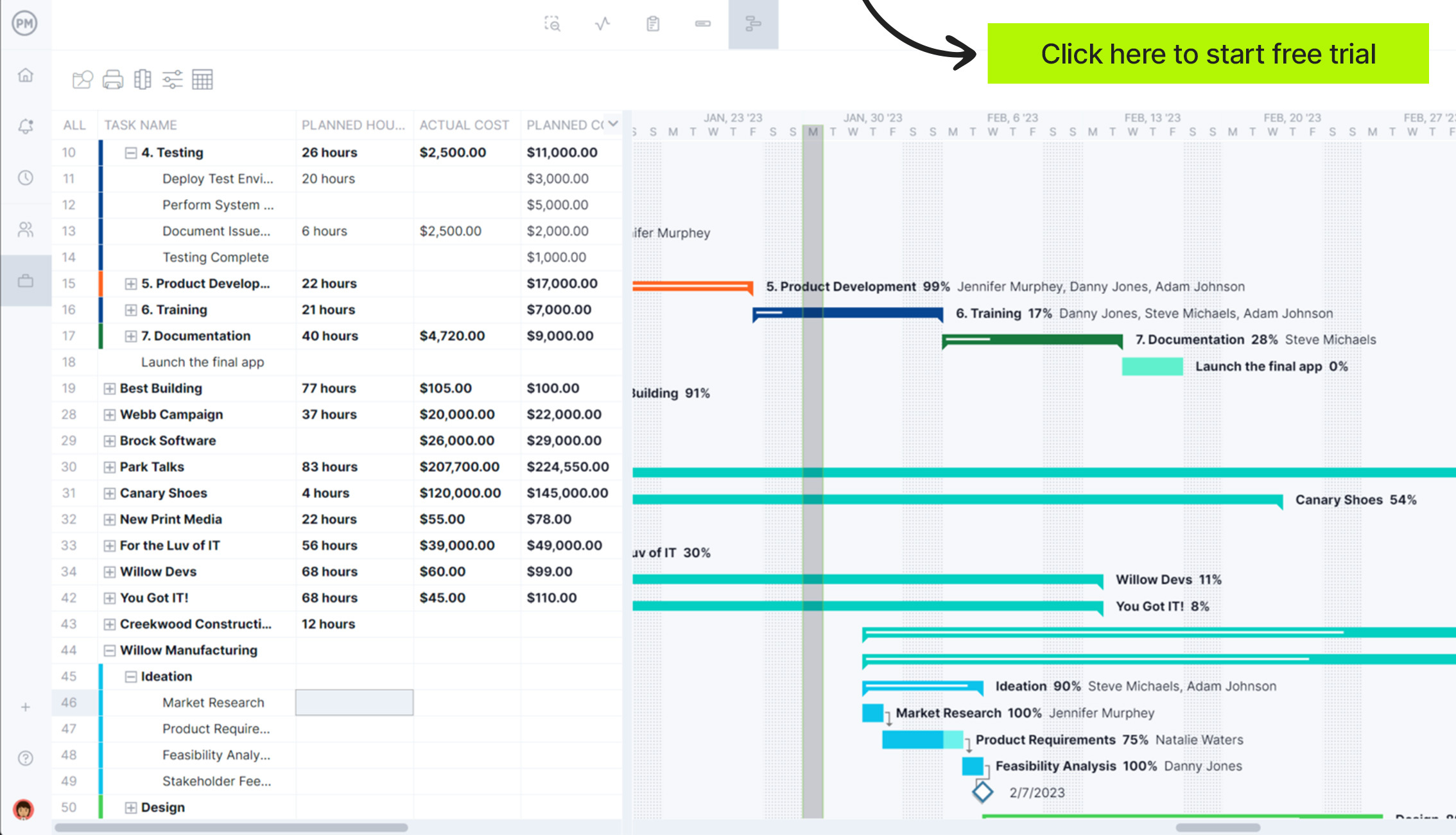
Who Participates In Program Implementation?
Program implementation is a team effort that involves multiple roles working together to ensure the program achieves its objectives. Clear responsibilities and accountability are critical to success. Understanding who participates in program implementation helps organizations assign tasks effectively, monitor progress and maintain alignment with strategic goals.
Program Sponsor
The program sponsor is typically an executive or senior leader who champions the program at the organizational level. They provide strategic guidance, secure funding, and ensure the program aligns with broader business objectives. During program implementation, the sponsor supports decision-making, removes obstacles and ensures the team has the resources it needs to succeed. They act as the bridge between the program team and key stakeholders, advocating for the program and reporting progress to executives. A strong sponsor helps maintain focus and momentum, keeping the program on track even when challenges arise.
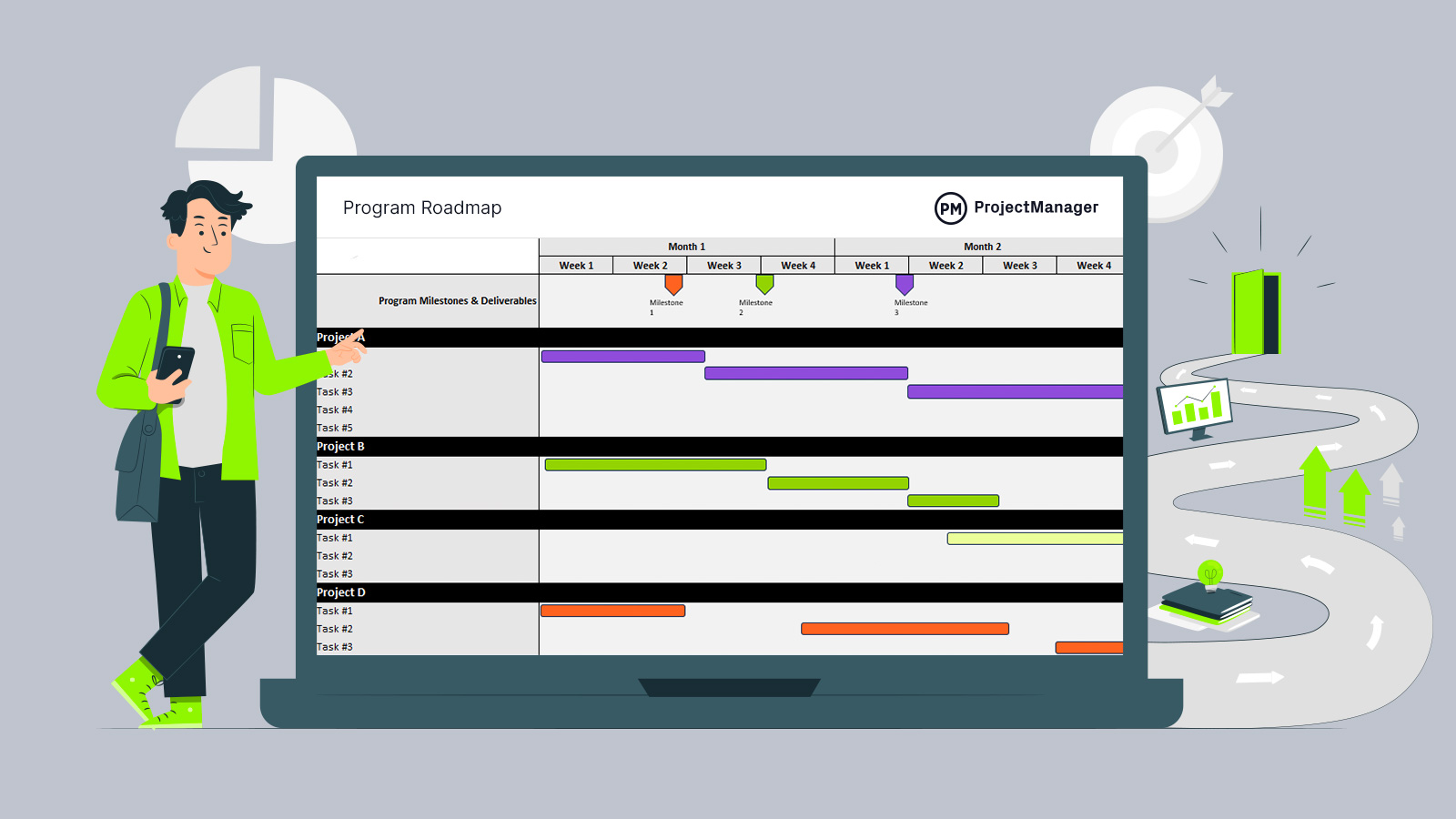
Get your free
Program Roadmap Template
Use this free Program Roadmap Template for Excel to manage your projects better.
Program Manager
The program manager oversees the day-to-day execution of the program and coordinates multiple projects within it. They develop the program implementation plan, assign tasks, monitor progress and manage risks. The program manager ensures that project teams work together effectively, resources are used efficiently and milestones are achieved on schedule. They also communicate updates to the program sponsor and governance board, keeping all parties informed. By managing dependencies and aligning objectives, the program manager is essential for turning strategic plans into tangible outcomes.
Program Governance Board
The program governance board provides oversight, guidance and approval for key decisions during program implementation. Composed of senior stakeholders or subject matter experts, the board reviews progress reports, approves major changes and ensures compliance with organizational policies.
They monitor risks, confirm alignment with strategic goals and help resolve conflicts between projects or teams. The governance board acts as a quality and accountability checkpoint, supporting the program manager and sponsor while ensuring that program implementation stays on course and delivers the expected value to the organization.
Program Roadmap Template
Download this free program roadmap template to manage multiple projects within a program. This template allows program managers to list all projects and their tasks and set durations and identify dependencies. The visual timeline helps in tracking progress, aligning stakeholders and ensuring that strategic goals are met.

It’s particularly useful during the planning phase to align project schedules, allocate resources and identify dependencies before execution begins. Additionally, it aids in auditing performance by tracking progress against planned milestones during ongoing programs.
Why Is Program Implementation Important?
Program implementation is important because it turns strategic plans into actionable results. Without proper execution, even well-designed programs can fail to meet objectives, waste resources or miss deadlines. Effective program implementation ensures that tasks are coordinated, milestones are achieved and risks are managed throughout the process. It provides a structured approach that allows teams to track progress, measure success and adjust actions when issues arise.
Beyond achieving immediate goals, program implementation helps maintain alignment with organizational strategy. It provides visibility to stakeholders, ensures accountability across teams and supports consistent communication. By implementing programs effectively, organizations can maximize return on investment, improve operational efficiency and increase the likelihood of long-term success.
Related: 10 Free Program Management Templates for Excel and Word
What Is a Program Implementation Plan?
A program implementation plan is a detailed roadmap that outlines how a program will be executed. It includes objectives, timelines, resources, responsibilities and key milestones. The plan provides a framework for coordinating multiple projects, assigning tasks, managing dependencies and monitoring progress. Having a clear program implementation plan ensures that all participants understand their roles, expectations and deadlines.
The plan also serves as a communication tool for stakeholders and decision makers. It allows managers to anticipate risks, allocate resources efficiently and track performance against the program’s goals. By following a structured program implementation plan, teams can maintain focus, adapt to changes and achieve consistent results across all aspects of the program.
What Should Be Included in a Program Implementation Plan?
A program implementation plan is most effective when it clearly outlines all aspects of executing the program. Including comprehensive elements ensures that teams understand expectations, resources are allocated efficiently and progress is tracked consistently. A well-documented plan helps minimize risks, maintain alignment with strategic goals and provides a roadmap for achieving program success.
Program Purpose
The program purpose explains why the program exists and what it aims to achieve. It provides a high-level view of the intended outcomes and the value the program delivers to the organization or stakeholders. Clearly defining the program purpose sets a foundation for decision-making and helps align all activities with the overarching objectives during program implementation.
Program Goals and Objectives
Goals and objectives translate the program purpose into specific, measurable outcomes. Goals define the desired results while objectives break them down into actionable steps. Including clear goals and objectives in a program implementation plan ensures that each team member understands their role and what success looks like, creating accountability and a shared vision for program execution.
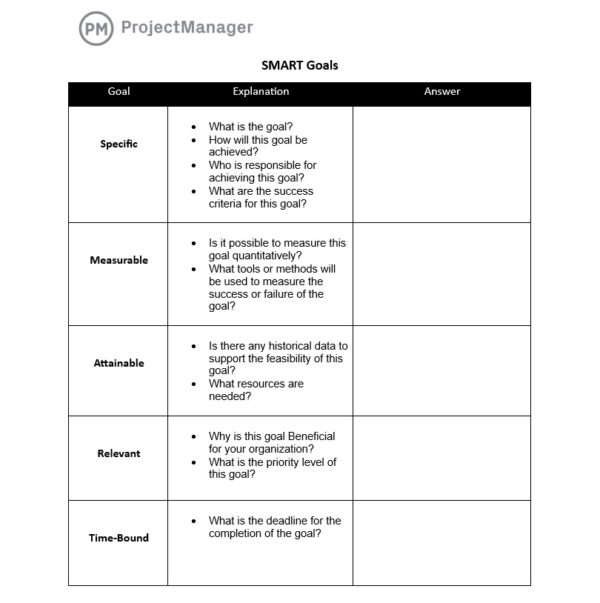
Program Strategic Alignment
Strategic alignment ensures that the program supports the organization’s long-term priorities and initiatives. It demonstrates how the program contributes to business goals, resource planning and stakeholder expectations. By documenting strategic alignment in the program implementation plan, leaders can justify the program, prioritize resources effectively and maintain focus on delivering high-value outcomes.
Program Scope
The program scope defines what is included and excluded from the program. It sets boundaries, identifies deliverables and clarifies expectations for stakeholders and teams. A well-defined scope reduces confusion, prevents scope creep and ensures that program implementation stays focused on achieving intended results within agreed timelines and resources.
Program Governance Roles and Responsibilities
This section identifies who is responsible for decision-making, oversight and execution. It includes the program sponsor, program manager and governance board, as well as project leads and key stakeholders. Clearly outlining roles and responsibilities in the program implementation plan ensures accountability and enables efficient communication and collaboration throughout the program.
Program Implementation Strategy
The program implementation strategy outlines how the program will be executed from start to finish. It defines the approach, methods and processes that teams will follow to achieve program objectives efficiently. A clear strategy helps coordinate tasks, manage risks, allocate resources effectively and guide stakeholders through each phase of the program. By documenting the strategy, organizations create a roadmap that supports consistent execution and maximizes the likelihood of program success.
Phased Rollout Approach
The phased rollout approach divides the program into manageable stages. Each phase includes specific deliverables, milestones and evaluation criteria. This method allows teams to implement changes incrementally, test processes, and make adjustments before moving to the next phase. A phased approach reduces risk and ensures smoother program execution.
Change Management Guidelines
Change management guidelines describe how organizational changes will be introduced, communicated and adopted. They outline steps to engage stakeholders, address resistance and support team members during transitions. Including change management in the program implementation plan helps maintain buy-in and ensures that program changes are successfully embedded into existing workflows.
Related: 14 Free Change Management Templates for Excel and Word
Communication Plan
The communication plan defines how information will be shared among stakeholders, teams and leadership. It specifies channels, frequency, content types and responsible parties. Clear communication ensures that everyone remains informed about progress, risks and key decisions, supporting transparency and alignment throughout program implementation.
Program Roadmap & Timeline
The program roadmap and timeline illustrate when major deliverables and milestones will occur. It provides a visual overview of dependencies, deadlines and critical paths. Including a roadmap in the program implementation plan allows teams to track progress, manage resources effectively and adjust schedules when necessary, ensuring the program stays on course.
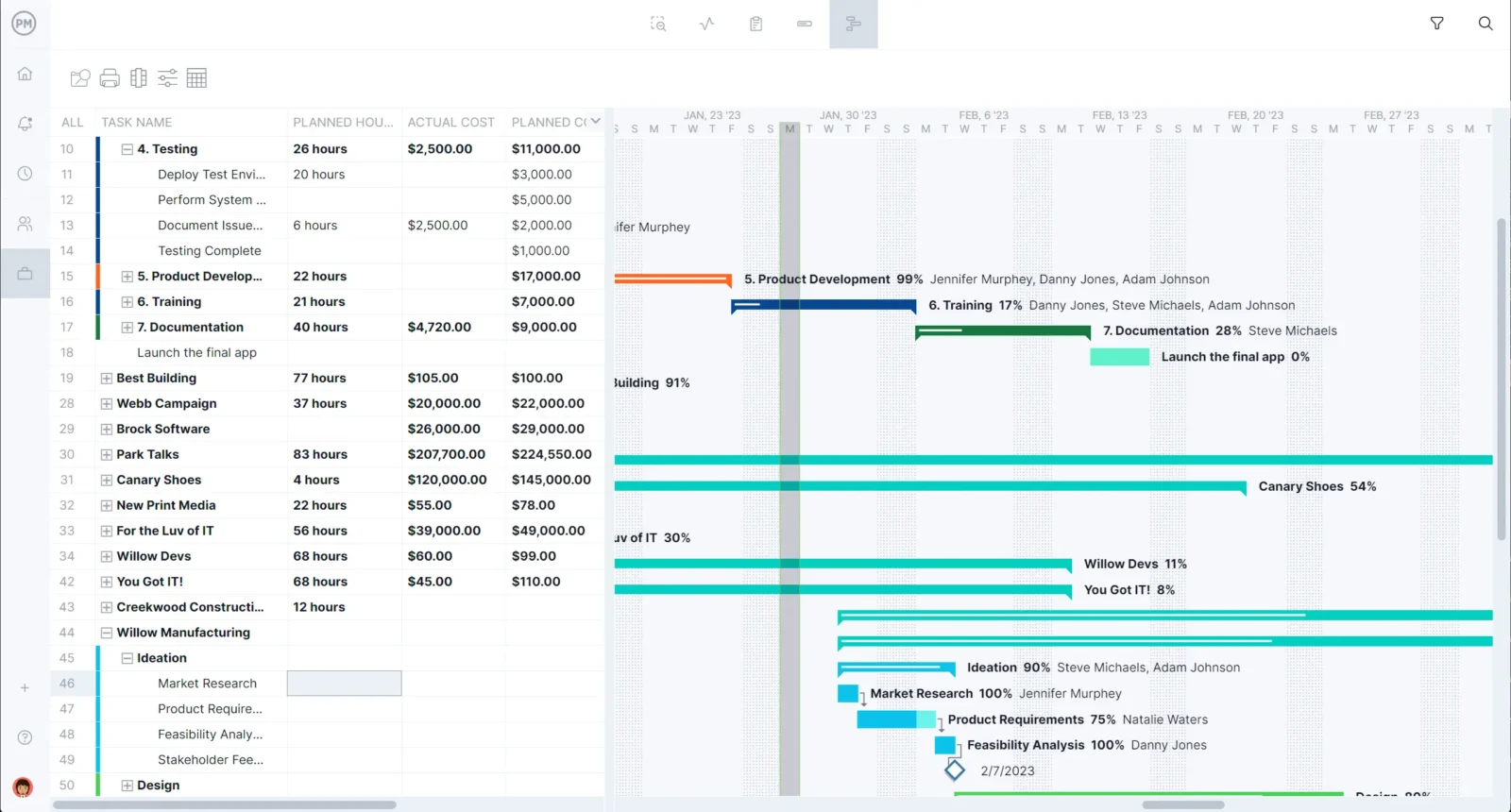
Program Resource Requirements
Resource requirements detail the personnel, equipment, budget and other assets needed to execute the program. It identifies resource allocation, availability and potential constraints. Documenting resource needs in the program implementation plan ensures that teams have what they need to meet objectives and minimizes delays caused by resource shortages.

Risk Management Plan
The risk management plan identifies potential threats to program success, assesses their likelihood and impact, and defines mitigation strategies. Including a risk plan in the program implementation plan helps teams anticipate issues, respond proactively and maintain program continuity under changing conditions.

Program Monitoring and Evaluation
Monitoring and evaluation define how program progress and performance will be measured. Metrics, KPIs, reporting schedules and feedback mechanisms are included to track success against objectives. A structured monitoring plan ensures that program implementation is transparent, progress is measurable, and lessons learned are captured for continuous improvement.
Program Sustainability
Program sustainability addresses how outcomes will be maintained after implementation is complete. It includes strategies for ongoing support, resource management, stakeholder engagement and continuous improvement. Including sustainability in the program implementation plan ensures that the program delivers lasting value and remains aligned with organizational goals over time.
How ProjectManager Helps With Program Implementation
ProjectManager is designed to streamline program implementation by giving managers complete visibility across multiple projects. With multiple project views—including Gantt charts, task lists, boards and calendars—teams can easily see how individual tasks fit into the overall program.
This flexibility addresses the common pain point of scattered information and helps managers prioritize work, track dependencies and keep complex programs aligned with organizational goals. By centralizing all projects in one platform, our software reduces confusion, prevents missed deadlines and ensures everyone stays on the same page.
Use Resources Efficiently
Effective program implementation relies on using resources efficiently. Our software provides robust resource management tools that show team availability, workload distribution and potential conflicts. Managers can quickly reassign tasks, balance workloads and forecast resource needs across multiple projects. This resolves the common challenge of overloading staff or misallocating resources, ensuring programs run smoothly without overburdening team members or exceeding budgets.
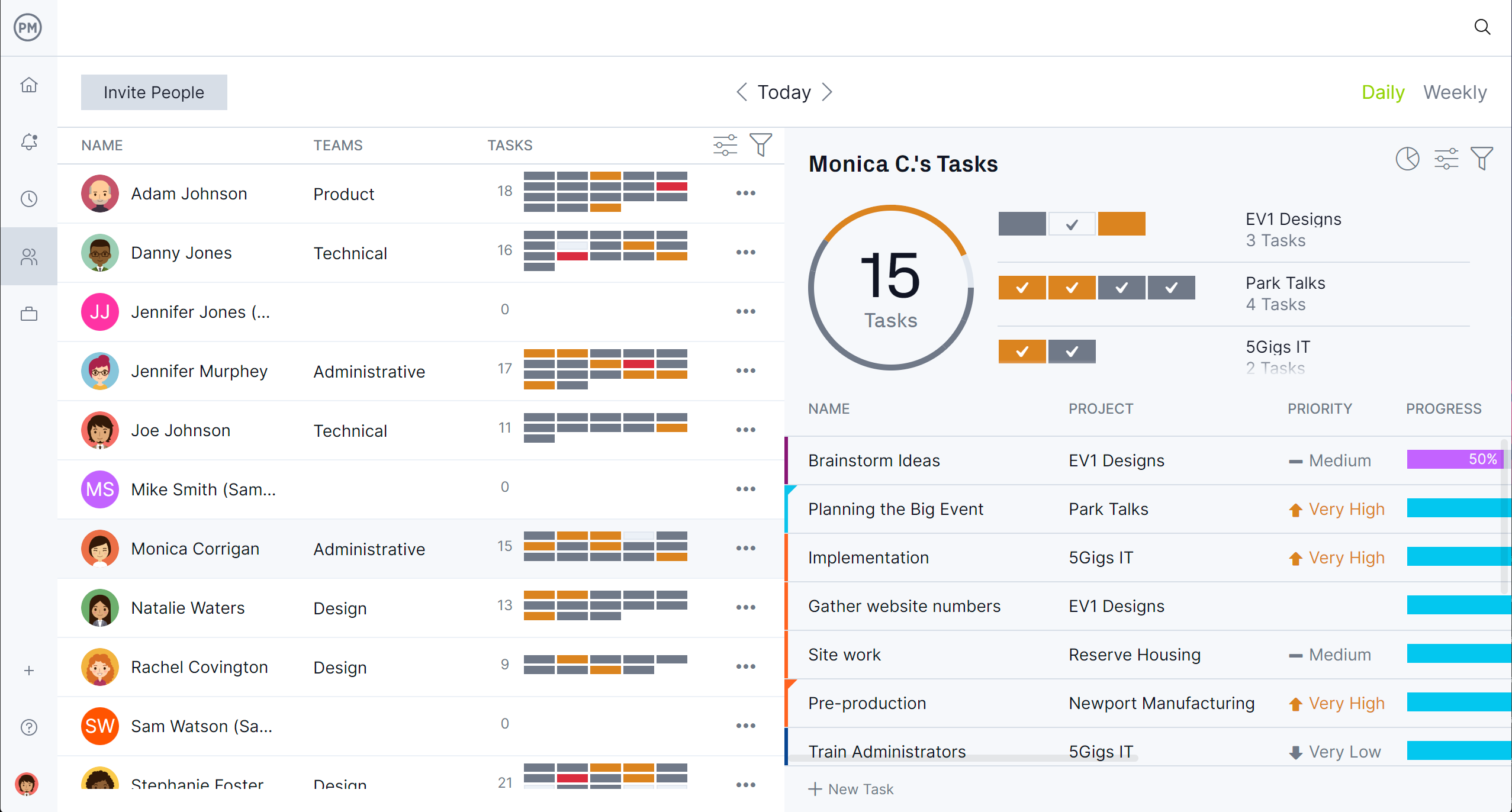
Meet Deadlines With Tracking and Reporting
Keeping track of progress and measuring program success can be time-consuming, but our software simplifies it with real-time tracking and reporting features. Automated dashboards for projects, programs and portfolios, progress charts and customizable reports let managers monitor milestones, identify delays and adjust schedules proactively.
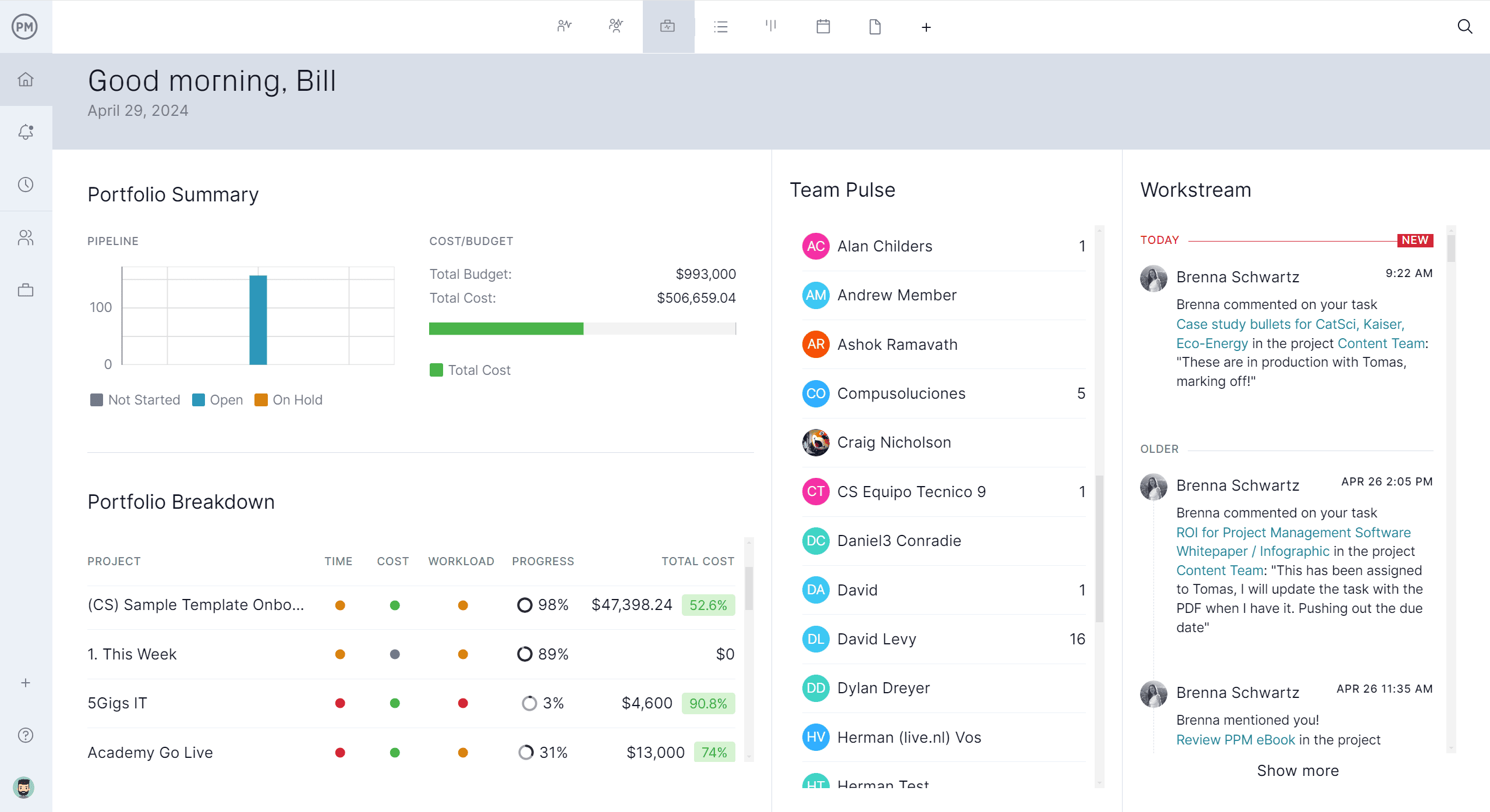
Related Program Management Content
Program implementation is part of the larger program management process. For readers curious to read more about this topic, check out the links below. There are articles on best practices, free templates and much more.
- 10 Program Management Best Practices
- 10 Free Program Management Templates for Excel and Word
- What Is a Program Roadmap? (Example & Template Included)
- Program Life Cycle Management: Mastering Program Phases
- Program Manager vs. Project Manager: Key Differences
ProjectManager is online project and portfolio management software that connects teams, whether they’re in the office or out in the field. They can share files, comment at the task level and stay updated with email and in-app notifications. Get started with ProjectManager today for free.

